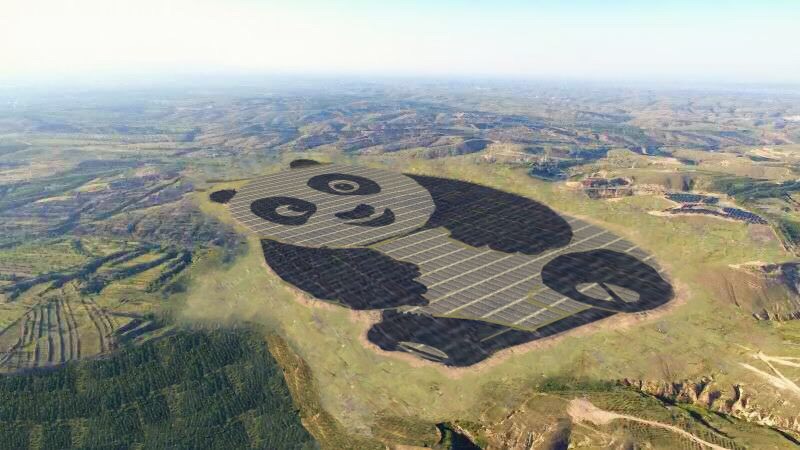The credit profiles of PV plant operators in China are “weakening,” based on their 2018 financial results, while those of companies that operate wind farms in the country have started to stabilize, according to a recent report by Fitch Ratings. It mainly attributes this to the much “heavier financial burden” that PV project operators have to bear, as well as improvements in the way wind installations are run. But the ongoing delay of subsidy payments to solar developers is also complicating the situation.
“We do not expect a quick fix to the subsidy delay,” the ratings agency says. “The shortfalls in the Renewable Surcharge Fund will only grow bigger, as China has been reluctant to raise the CNY 19 ($2.83)/MWh surcharge levied on power consumers to avoid higher electricity prices.”
Most of the Chinese PV operators that reported lower profits last year blamed their poor performance on higher funding costs and the need to take on more debt. Fitch Ratings notes that 76% of the 174 GW of solar that had been installed in China by the end of 2018 was plugged into the grid in the 2016-18 period. However, just 30% of the country’s 184 GW of cumulative wind capacity was installed during that period.
“The solar-panel installation boom in recent years has severely bloated the operators' balance sheets,” says the ratings agency.
Solar operators GCL New Energy, Beijing Enterprises Clean Energy (BECE) and Panda Green Energy ramped up their operational PV capacity by a combined 19.6% last year. But subsidiaries of China’s Big Five power groups — Huaneng Renewables, Huadian Fuxin, Datang Renewable, Longyuan and China Power Clean Energy — increased their combined wind capacity by just 2.9% over the same period, Fitch Ratings says.
It also notes that GCLNE, BECE and Panda Green reported an average 41.8% year-on-year spike in their net finance expenses, not including capitalized interest, underscoring the surge in their financing costs. The subsidiaries of the Big Five power groups, which primarily invest in wind projects, reported combined net profit growth of 7.3% year on year in 2018, along with an average 2.3% jump in debt. But solar operators GCLNE, BECE and Panda Green reported a combined 41.8% year-on-year decline in net profit, against a 17.6% combined jump in debt.
Popular content
However, utilization of solar and wind projects bounced back in 2018. Average nationwide curtailment of solar improved from 6% to 3% last year, Fitch Ratings claims. The national average utilization of solar bounced back by 37 hours to 1,115 hours over the same period. Average nationwide curtailment of wind farms in China fell 5 percentage points to 7% in 2018.
That said, the delayed subsidy payments continue to intensify cash-flow pressures for project developers and operators in China.
“The 98 GW of solar capacity connected in 2017 and 2018, along with a proportion of the 34 GW that came online in 2016, will remain unsubsidized as they have not been included in the government's renewable subsidy catalogue,” Fitch Ratings says. “Trade and bills receivables of GCLNE, BECE and Panda Green roughly doubled in 2018, which consumed all their EBITDA in the year at the cash flow from operations (CFO) level. Solar farms are barely breaking even on a CFO basis after interest payments without subsidies, indicating that new projects are not helping companies generate cash to repay debt.”
However, Fitch Ratings acknowledges that solar and wind operators reduced capex in 2018, as their investment appetite has waned ahead of anticipated cuts to the country’s feed-in tariffs. It believes that some solar operators will probably have to sell off assets to raise liquidity, given the difficulties associated with refinancing at present.
This content is protected by copyright and may not be reused. If you want to cooperate with us and would like to reuse some of our content, please contact: editors@pv-magazine.com.


By submitting this form you agree to pv magazine using your data for the purposes of publishing your comment.
Your personal data will only be disclosed or otherwise transmitted to third parties for the purposes of spam filtering or if this is necessary for technical maintenance of the website. Any other transfer to third parties will not take place unless this is justified on the basis of applicable data protection regulations or if pv magazine is legally obliged to do so.
You may revoke this consent at any time with effect for the future, in which case your personal data will be deleted immediately. Otherwise, your data will be deleted if pv magazine has processed your request or the purpose of data storage is fulfilled.
Further information on data privacy can be found in our Data Protection Policy.